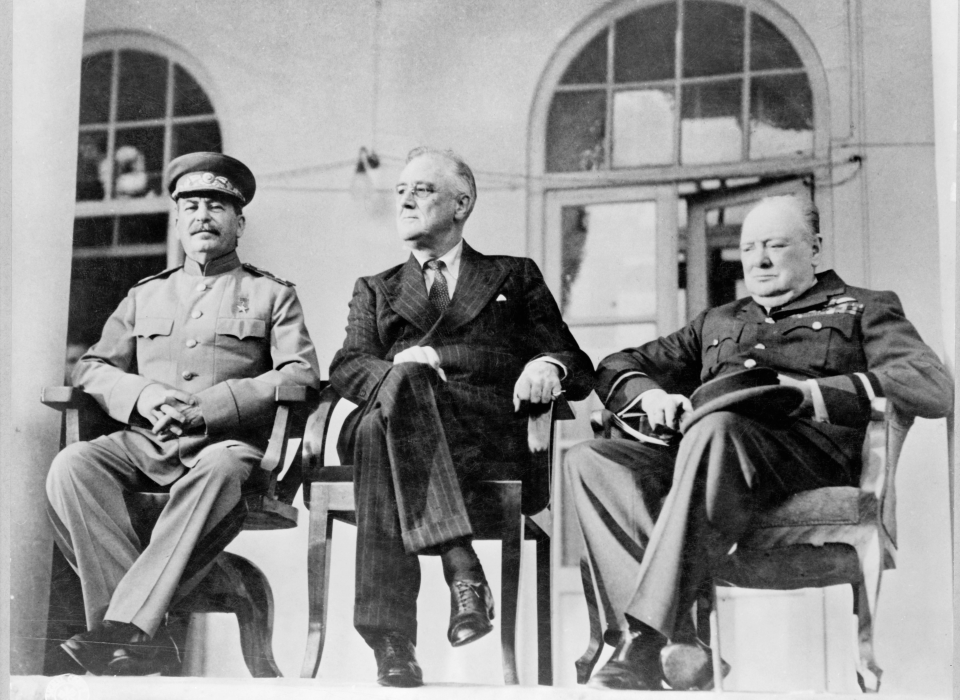After years of political conflict in Europe, World War 2 is most commonly accepted to have started with Germany's invasion of Poland in September of 1939. Like World War 1, America would not be completely involved in the conflict until later. Yet just like the first Great War, America would secretly aid the Allies on the side, supplying them with money and military equipment. On January 6, 1941, FDR outlined in his annual statement in Congress his idea for the Four Freedoms: freedom of speech, freedom of religion, freedom from want, and freedom from fear. In March of 1941, only a couple months into his third term in office, FDR passed the Lend-Lease Act against strong Congress opposition, allowing the US to official aid Britain and other allies in their war efforts. Unlike Wilson, Roosevelt appeared to some to be eagerly ready for war, despite American's strong feelings of isolationism during the time.
A year earlier, Japan had joined the war on the side of the Axis, resulting in trade immediately being cut off with Russia. At a lack of necessary materials, Japan tried to negotiate trade with the US, which FDR firmly denied. Because of this, some people debate America's participation in the war to be largely insinuated by FDR, as he was "broken the Japanese code." After being denied trade by the US, they launched the infamous attack on Pearl Harbor on December 7, 1941. The next day, Congress declared war on Japan at the request of FDR, and two days later, Germany and Italy declared war on the US. Roosevelt declared formally to the nation that "Dr. New Deal" had been replaced by "Dr. Win the War."
Roosevelt, abiding by Section 2 of the Constitution which stated that "The President shall be Commander-in-Chief of the Army and Navy of the United States", was determined to lead the nation proudly in and out of the war. Similar to Wilson, he promised to use America's involvement in the war as an "arsenal of democracy", totaling more than $50 billion in the support provided to the Allied forces. During the war, Roosevelt feared that a hostile relationship with the Soviet Union would eventually become consequential. He showed his friendliness to Stalin when they met at Tehran in November of 1943, and again in Crimea in February of 1945. Because of this, Roosevelt was able to successfully convince Stalin to declare war on Japan and "establish democratic governments in eastern Europe." Nevertheless, Stalin would eventually break the latter agreement.
The Conference in Crimea mentioned above had taken place shortly after Roosevelt's fourth inauguration. However, by then, his health was rapidly declining, affected greatly by his arteriosclerosis and daily commitments as Commander-in-Chief. On April 12 of that same year, when in Warm Springs, Georgia, President Roosevelt died of a "massive cerebral hemorrhage." Succeed by his vice president Harry S. Truman, WW2 was officially ended less than five months later.
Sources:
https://www.khanacademy.org/humanities/us-history/rise-to-world-power/us-wwii/a/fdr-and-world-war-ii

I thought your post did a great job at outlining FDR's involvement in the war and had a lot of interesting information. I read this article about how World War II marks the end of the Great Depression, but truly the U.S. just traded unemployment for debt and postponed recovery. I thought that was an interesting point.
ReplyDeletehttps://fee.org/articles/what-ended-the-great-depression/
This is a really interesting post that helps show how FDR got involved in the war while trying to protect the US from the Soviet Union. FDR didn't have the support of the public to join the war earlier and help protect allies from the German invasion, but he used some interesting tactics at home to try to make it clear to the Germans that the Americans could get involved. He ordered the production of 10,000 aircraft in 1938, before the Americans had any plans to enter the war.
ReplyDeletehttp://www.worldwar2facts.org/franklin-roosevelt.html#keeping-the-united-states-out-of-the-war